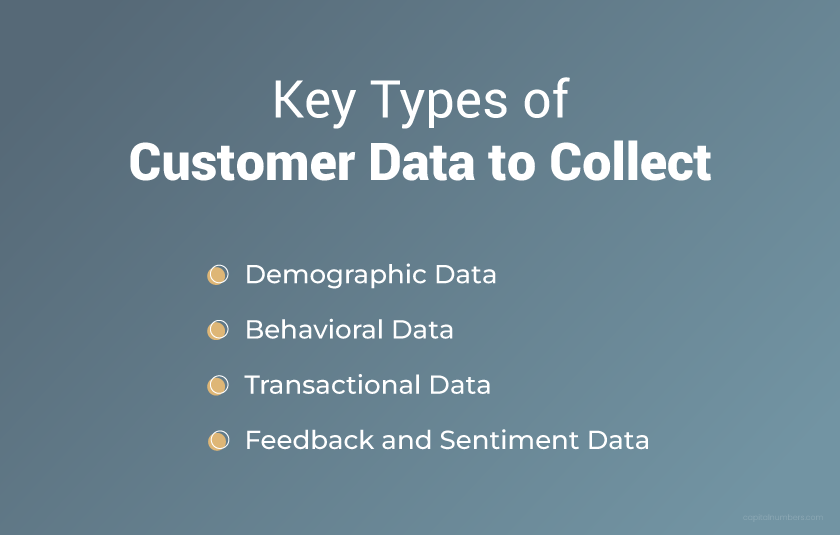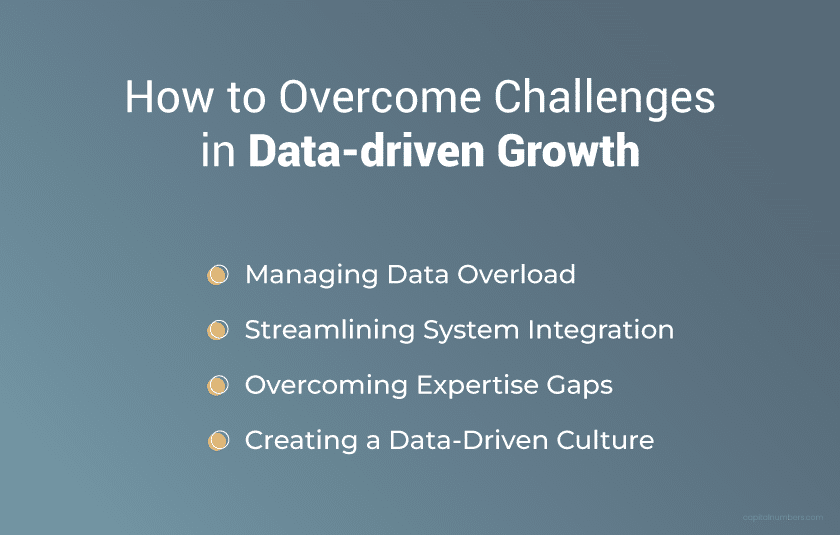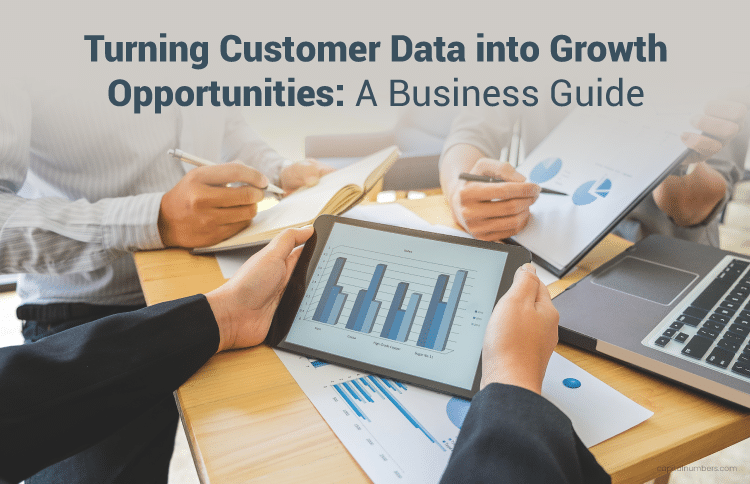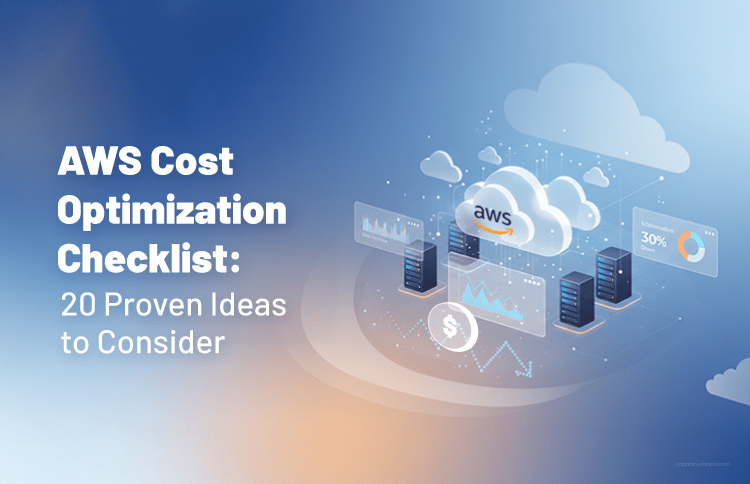How to Turn Customer Data into Growth Opportunities for Your Business
Table of Contents
Customer data is no longer just a digital footprint – it’s the blueprint for growth. Every interaction, from clicks to purchases, holds valuable insights into what your customers want, expect, and respond to. But collecting data isn’t enough – real impact comes from knowing how to use it.
Businesses that use customer data analytics and rely on data-driven decision making can personalize experiences, predict trends, and build lasting loyalty. Whether you’re a startup or an established brand, understanding customer behavior through data is essential for developing effective business growth strategies.
In this guide, we will discuss practical ways to unlock the power of customer data, so you can move from guesswork to strategy, and from strategy to growth opportunities.
Why Customer Data is a Game Changer for Growth?
Regardless of whether you have a small or large business, having access to customer data is crucial for your success. It’s not just about tracking sales or customer activity – it’s about understanding your audience on a deeper level and using that information to make informed decisions. Here’s why customer data is so important for you:
Unlock Valuable Insights:
Customer data analytics provides insights into your customers’ behaviors, preferences, and buying patterns. These insights allow you to tailor your products, services, and marketing strategies to meet their needs more effectively.
Understand Customer Behavior:
Customer behavior analysis helps you identify what drives your customers’ decisions. By understanding how they interact with your brand, you can create more effective experiences, enhance product offerings, and increase engagement.
Make Data-Driven Decisions:
Data-driven decision making empowers you to act with confidence. Rather than relying on guesswork or assumptions, you can base your strategies on concrete data, helping you maximize ROI and minimize risks.
Enhance Customer Retention:
Using customer data to personalize communication and offerings helps improve customer retention. By showing your customers that you understand their needs, you build loyalty and encourage repeat business.
Optimize Operations:
Data helps streamline processes, identify inefficiencies, and optimize every aspect of your business. From inventory management to customer service, using data effectively can save you time, resources, and money.
Boost Business Growth:
When used correctly, customer data serves as the foundation for your business growth strategies. It helps you identify new opportunities, refine your approach, and scale your operations in a way that’s efficient and sustainable.
Ready to drive growth with your customer data?
At Capital Numbers, we specialize in data engineering services that help you turn your data into actionable insights. Let’s talk about how we can support your business in transforming raw data into measurable outcomes. Reach out to us today for a quick consultation.
Key Types of Customer Data to Collect

Different types of customer data provide you with distinct insights, enabling you to make more informed decisions and drive growth. Here’s what matters most:
Demographic Data:
This includes basic information such as age, location, and income. Understanding your audience through demographics helps you tailor your marketing, target the right people, and improve your business growth strategies.
Behavioral Data:
This shows how your customers interact with your website, app, or products. Customer behavior analysis helps you spot trends, understand preferences, and make data-driven decisions to improve the customer experience.
Transactional Data:
Details such as purchase history, repeat orders, and cart abandonment provide clues about buying habits. Using predictive analytics, you can anticipate what your customers may buy next and adjust your strategy for better results.
Feedback and Sentiment Data:
Reviews, surveys, and ratings reveal how customers feel about your brand. Analyzing this data helps you fix issues, improve products, and build loyalty – key to how to use customer data for business growth.
Collecting these types of data gives you a clear picture of your customers. Use it wisely, and you can make smarter decisions, offer better experiences, and grow your business faster.
How to Collect Customer Data?
Collecting the right customer data is the first step in making smarter decisions and driving business growth. Here’s how you can gather valuable insights from various sources:
Analytics Platforms:
Tools like Google Analytics allow you to track website activity and understand how users interact with your site. With data analytics for business, you can measure visitor behavior, track conversions, and optimize your website for better engagement, all while making data-driven decisions.
CRM and Sales Software:
Customer Relationship Management (CRM) tools and sales software give you access to purchase history, contact information, and engagement data. These tools provide a complete view of your customers’ journeys, helping you improve marketing strategies, boost sales, and enhance customer relationships – all essential for successful business growth strategies.
Surveys and Reviews:
Actively asking for feedback through surveys or reading customer reviews gives you direct insight into how your customers feel about your products and services. This feedback and sentiment data can be used to improve your offerings, increase satisfaction, and retain more customers, which is crucial for sustained growth.
Social Media Monitoring:
Keep an eye on mentions, comments, and conversations about your brand on social media. Social listening allows you to understand customer sentiment, identify trends, and engage directly with your audience. This real-time feedback is an invaluable resource for refining your products and marketing campaigns, helping you stay ahead of your competitors.
By using these tools, you can gather accurate, actionable data to drive smarter decisions and shape your business growth strategies. Ready to dive deeper into how to use customer data for business growth? Let’s keep going!
You May Also Read: Mastering the Art of Data Storytelling: A Complete Guide
How to Turn Customer Data into Action (Growth Opportunities)?
Collecting customer data is only useful if you put it into action. When used correctly, it can open up new opportunities and enhance your business growth strategies. Here’s how you can make the most of your data:
Personalize Customer Experiences:
Use customer behavior analysis to understand what your customers like and how they interact with your brand. This allows you to offer personalized recommendations, tailored messages, and special offers. When your customers feel understood, they are more likely to stay loyal and make repeat purchases.
Improve Marketing Efforts:
Data-driven decision making helps you create smarter marketing campaigns. By analyzing browsing habits, past purchases, and engagement patterns, you can target the right audience with the right message, improving conversions and making your marketing spend more effective.
Predict What Customers Want:
With predictive analytics, you can anticipate customer needs and behavior. For example, if a customer regularly buys certain products, you can offer related items or timely promotions. This proactive approach increases sales and makes customers feel valued.
Optimize Operations:
Data analytics for business helps you spot inefficiencies and optimize processes. You can manage inventory better, improve customer support, and deliver smoother experiences – all based on insights from your customer data.
Identify New Opportunities:
Customer data analytics can reveal trends, gaps, and untapped markets. This insight lets you launch new products, improve services, or enter new markets, helping your business grow in the right direction.
Keep Customers Coming Back:
Analyzing customer interactions, feedback, and purchase history lets you design retention strategies that work. Personalized offers, loyalty rewards, and timely follow-ups reduce churn and strengthen long-term relationships.
Using your customer data wisely turns information into action. Every insight can help you make smarter choices, improve experiences, and drive growth.
Turning Data into Decisions with an Energy Management Dashboard
The client had a dashboard that was facing several challenges, including bugs, errors, mismatched formats, incomplete data, a confusing structure, and unpredictable content – making it difficult to extract meaningful insights.
Learn how we used PostgreSQL, Python, AWS, and more to streamline operations, enhance usability, and transform the dashboard into a powerful decision-making tool. [Read the full case study here]
4 Things to Do to Overcome Challenges in Data-driven Growth

Using customer data analytics to drive growth is essential, but it comes with challenges. From data overload to integration issues, businesses often struggle to turn insights into meaningful actions. Here’s how you can overcome these hurdles and make data-driven decision making a part of your everyday operations:
1. Managing Data Overload:
As data is coming from websites, purchases, social media, and feedback, it’s easy to get confused. With AI-based software development solutions, you can automatically process and organize this data. AI can identify patterns, trends, and anomalies, allowing you to focus on the insights that truly support your business growth strategies.
2. Streamlining System Integration:
Your CRM, analytics tools, and sales platforms may not always work seamlessly together. Using AI-enabled analytics and data analytics for business platforms can bridge these gaps, bringing all your data into one accessible view. This makes it easier to spot trends and make faster, informed decisions.
3. Overcoming Expertise Gaps:
Understanding customer behavior analysis and acting on insights can be tough without the right skills. AI-driven platforms simplify complex analytics, offering predictive insights and recommendations so your team can make informed decisions, even without deep technical knowledge.
4. Creating a Data-Driven Culture:
For data-driven decision making to truly work, your team must consistently rely on insights from customer data analytics. Encourage data-backed planning for marketing, product development, and customer engagement. AI-powered tools can make analytics approachable, helping everyone in your business understand and act on the data.
By addressing these challenges with smart AI tools and analytics, your customer data stops being just numbers; it becomes a real engine for growth, smarter decisions, and competitive advantage.
How to Protect Customer Data and Ensure Privacy?
As businesses rely more on customer data to drive growth, protecting that data and ensuring privacy have become top priorities. A single data breach can not only damage your reputation but also lead to significant financial losses and legal consequences. Here’s how you can protect customer data and ensure privacy while making the most of your data-driven strategies:
Implement Strong Encryption:
Encryption is one of the most effective ways to protect sensitive customer information. Whether it’s data in transit (e.g., data being sent over the internet) or data at rest (e.g., stored in databases), using strong encryption ensures that even if data is intercepted, it remains unreadable.
Use Secure Data Storage Solutions:
Always store customer data in secure, compliant databases. Whether you are using on-premise servers or cloud services, ensure that the infrastructure meets industry security standards. This includes using firewalls, anti-virus protection, and encryption to safeguard stored data.
Limit Access to Sensitive Data:
Not everyone in your organization needs access to customer data. Implement strict role-based access control (RBAC) to limit access to sensitive information. Only employees who need the data to perform their job functions should have access, reducing the risk of internal breaches.
Regularly Update and Patch Systems:
Outdated systems are vulnerable to security breaches. Regularly update your software and systems to fix known vulnerabilities. This includes operating systems, web applications, and third-party services used for data processing and analysis. Keeping everything up to date ensures better protection against evolving threats.
Follow Legal and Regulatory Standards:
Ensure your data management practices align with global privacy regulations, such as GDPR, CCPA, or HIPAA, depending on your region and industry. Compliance with these regulations not only helps you protect customer data but also builds trust with your customers. Failing to comply can result in hefty fines and legal trouble.
Monitor Data Access and Usage:
Keep an eye on who is accessing customer data and how it’s being used. Regular audits and real-time monitoring can help detect unusual activities and prevent unauthorized access. You should also have clear policies in place for data retention and deletion when it’s no longer needed.
Educate Employees About Data Privacy:
Your team plays a critical role in protecting customer data. Provide regular training on the importance of data privacy, secure practices for handling data, and how to spot potential threats like phishing attacks. Employee awareness is key to minimizing human error and maintaining security.
Ensure Data Anonymization and Pseudonymization:
When possible, anonymize or pseudonymize customer data to protect identities. This is especially useful when using data for analysis, testing, or sharing with third parties. Anonymization reduces the risk of exposing sensitive customer information in case of a data breach.
Offer Transparent Data Privacy Policies:
Make sure your customers know how their data is being used, stored, and protected. Provide clear, accessible privacy policies that outline how you collect, store, and manage their data. Transparency builds trust and ensures customers feel comfortable sharing their information with your business.
By following these best practices, you can create a strong foundation for data security, protect customer privacy, and maintain the trust that is crucial for long-term business growth.
You May Also Read: From Data to Decisions: How You Can Use AI to Revolutionize Your Business Strategy
Bottom Line
Growth doesn’t come from data alone; it comes from what you do with it. By translating customer insights into meaningful actions, businesses can create more relevant products, more loyal relationships, and more resilient strategies. The companies that thrive will be those that treat customer data not as a static asset, but as a living, evolving conversation with their audience. So start listening, start learning, and start leading, because the future of growth is already in your hands.


















